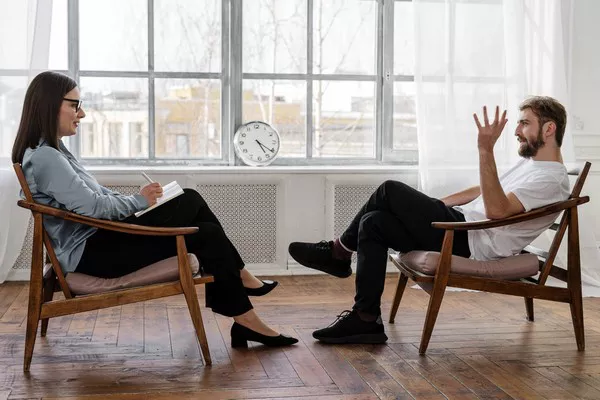The transition from friendship to a romantic relationship can be a delicate and complex process. Many people wonder how long it takes to turn a friendship into a relationship, but the truth is that there is no one-size-fits-all answer. Every friendship and potential romantic relationship is unique, and the timeline for moving from one to the other can vary greatly depending on the individuals involved, their feelings, and the dynamics between them.
In this article, we will explore the psychological factors that influence the transition from friendship to romance, examine the potential benefits and challenges of making this shift, and provide insights into how to navigate this change successfully.
The Complexity of Friendship and Romance
Before diving into timelines, it’s essential to acknowledge the complexity of both friendships and romantic relationships. Friendships are built on trust, mutual respect, shared experiences, and emotional support. In many cases, these are the very same qualities that serve as the foundation of a romantic relationship. However, adding romance to a friendship can change the dynamic, requiring both individuals to navigate new emotions, expectations, and boundaries.
The key distinction between friendship and a romantic relationship often lies in the presence of romantic and physical attraction. While you might share deep emotional intimacy with a close friend, romantic feelings introduce a new layer of complexity, which can take time to develop and explore.
Factors That Influence the Transition from Friendship to Romance
Several factors can influence how long it takes for a friendship to evolve into a romantic relationship. These factors include emotional readiness, mutual attraction, shared experiences, and personal circumstances. Let’s examine these in detail:
1. Emotional Readiness
Both individuals must be emotionally ready for the possibility of a romantic relationship. Emotional readiness refers to a person’s ability to handle the potential vulnerability, intimacy, and commitment that come with romance. This involves being aware of one’s own feelings, understanding the risks of changing the dynamic, and being prepared to navigate the emotional shifts that can occur.
If either person is not emotionally ready for a romantic relationship—whether due to past heartbreak, unresolved personal issues, or a fear of vulnerability—it may take longer for the friendship to transition into something more. In contrast, if both individuals feel secure in themselves and open to exploring deeper emotions, the transition may happen more quickly.
2. Mutual Attraction
Physical and romantic attraction plays a significant role in the transition from friendship to romance. Some friendships may already have a level of mutual attraction present from the start, while in other cases, romantic feelings may develop gradually over time.
The process of realizing romantic attraction can vary greatly from person to person. For some, attraction may be instantaneous, while for others, it may take months or even years for romantic feelings to emerge. If both individuals recognize and acknowledge this mutual attraction early on, the transition can be quicker. However, if one person takes longer to develop romantic feelings, the timeline can be extended.
3. Shared Experiences and Deepening Connection
Shared experiences, especially those that create deeper emotional bonds, can accelerate the process of turning a friendship into a relationship. Going through meaningful life events together—such as supporting each other during tough times, celebrating achievements, or exploring common interests—can foster a sense of intimacy that sets the stage for romance.
When friends consistently show up for each other, provide emotional support, and share a strong sense of connection, it’s natural for the line between friendship and romance to blur. In these cases, the shift to a romantic relationship may feel like a natural extension of an already deep bond.
4. Timing and Personal Circumstances
Timing is a critical factor when it comes to relationships. Both individuals need to be in a place where they are ready to pursue a romantic relationship. External factors, such as career demands, family responsibilities, or other relationships, can affect the timeline for turning a friendship into romance. If one person is going through a particularly challenging or busy phase of life, they may not be in the right mindset to entertain the possibility of romance, even if feelings are present.
In some cases, friends may wait for a more opportune moment to explore romantic feelings, knowing that the timing isn’t quite right. This can lead to longer periods of friendship before taking the leap into a relationship.
Stages of Transitioning from Friendship to Romance
Turning a friendship into a romantic relationship typically follows a series of stages. While the timeline for each stage can vary, understanding these stages can help clarify the process:
1. Realization of Romantic Feelings
The first stage in transitioning from friendship to romance often involves one or both individuals realizing they have romantic feelings for the other. This realization can happen suddenly or gradually over time. For example, you may start to notice that you look forward to seeing your friend more than usual, that you feel a sense of longing when you’re apart, or that you begin imagining a romantic future together.
During this stage, it’s common to feel conflicted about these new feelings, as you may worry about jeopardizing the friendship or fear that the other person doesn’t feel the same way.
2. Acknowledgment of Feelings
Once romantic feelings are realized, the next stage involves acknowledging these feelings—either internally or by sharing them with the other person. This can be a vulnerable moment, as expressing romantic interest to a friend carries the risk of rejection or altering the friendship dynamic.
However, open communication is crucial during this stage. Both individuals need to be honest about their feelings and intentions. If both parties express mutual romantic interest, the transition to a relationship becomes more straightforward. If only one person has romantic feelings, it may take time to navigate these emotions and decide the best path forward.
3. Navigating the Shift
Once romantic feelings are out in the open, the process of shifting from friendship to romance begins. This stage involves exploring the new dynamic between the two individuals, which can include going on dates, increasing physical affection, and discussing relationship expectations.
During this stage, it’s important to maintain open communication and establish boundaries. Both individuals need to discuss how they feel about the evolving relationship and address any concerns about maintaining the friendship alongside the romantic relationship.
See Also: How to Tell If Friends Are Fake?
4. Establishing a Romantic Relationship
The final stage involves solidifying the romantic relationship. At this point, both individuals have mutually agreed to move forward in a romantic context. This stage may involve defining the relationship (DTR) and deciding what being a couple means to both parties.
It’s essential to maintain the elements of the friendship that made the connection strong in the first place. Keeping the friendship alive within the romantic relationship can help create a lasting, fulfilling partnership.
Challenges of Transitioning from Friendship to Romance
While many friendships successfully transition into romantic relationships, it’s important to acknowledge the potential challenges that can arise:
1. Fear of Losing the Friendship
One of the most common concerns about turning a friendship into a romantic relationship is the fear of losing the friendship if the romance doesn’t work out. This fear can cause hesitation or reluctance to take the next step. However, it’s important to recognize that friendships, like any relationship, evolve over time. Open communication and mutual respect can help preserve the friendship, even if the romantic relationship doesn’t last.
2. Balancing Friendship and Romance
Maintaining the balance between friendship and romance can be tricky. Couples who were once friends may need to adjust to new expectations and boundaries. It’s important to continue fostering the elements of the friendship—such as emotional support and shared activities—while also nurturing the romantic aspect of the relationship.
3. Unreciprocated Feelings
Not every friendship can or will transition into a romantic relationship. Sometimes, one person may develop romantic feelings while the other does not. In these cases, it’s important to handle the situation with care and respect. If the romantic feelings are unreciprocated, both individuals need to decide whether to continue the friendship or take some distance to allow for emotional healing.
Conclusion
So, how long does it take to turn a friendship into a relationship? The answer depends on a variety of factors, including emotional readiness, mutual attraction, shared experiences, and timing. For some, the transition may happen quickly, while for others, it may take months or even years. Ultimately, the most important aspect of this transition is ensuring that both individuals are on the same page and are open to exploring a deeper connection.
Navigating the shift from friendship to romance can be a rewarding experience that strengthens the bond between two people. With open communication, emotional awareness, and mutual respect, it’s possible to build a lasting and meaningful relationship that maintains the foundation of friendship while embracing the new dimensions of romance.
Related topics:




























